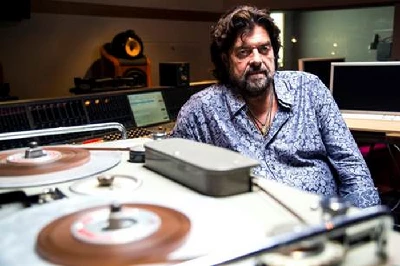published: 24 /
12 /
2015

Dastardly soaks up the atmosphere of Studio 2 at Abbey Road while Alan Parsons recounts his time there working with the Beatles and Pink Floyd
Article
I remember as an 11-year-old reading a book about the Beatles (the only type of book I could be persuaded to read at the time) and seeing a photo of a small one inch square cutting from the bed sheets of one of the Fab Four that a hotel in the States had been selling for a dollar each at the height of Beatlemania. The effect the band had on their fans back then was immediate, instinctive and total. And you could add ‘religious’ to that list.
Certainly there is something magical about sitting in Studio 2 at Abbey Road today, the room where The Beatles recorded most of their songs, listening to producer Alan Parsons recall his time working with the band. Exactly what that magic is is hard to define. Whatever the answer, the act of communication is central to the whole phenomenon and knowing Alan Parsons was stuck up in the tiny tape machine room adjacent to the Control Room while down here the fabs were rocking through ‘Polythene Pam’ is another step closer to the source.
Alan Parsons started working at Abbey Road in 1967 just as psychedelia was shaping a generation. It was a time when you could be working with Pink Floyd one day and then Pinky and Perky the next and when recording studios still had he air of laboratories complete with technicians in white coats. He paints the picture of an era changing rapidly before his eyes - an era when people were not afraid to experiment. Pop music as a formula was still so new that the money men hadn’t yet found a way of restraining it or controlling it.
Obviously this experimentation didn’t always work out. A picture flashes up on the screen of ‘Magic Alex’. This was the guy the Beatles had enlisted to build them their own studio in the basement of Apple Corps only to discover that he was bigger on ideas than delivery. He definitely looked a bit shifty or possibly just mad. One of his plans was apparently to have eight speakers in the control room - one for each track! The end result was Alex’s mixing desk was sold for parts up the Edgware Road and the Beatles returned to Abbey Road for their final album and then ended up naming the record after the place. Alan recalled the final day of recording when the band had finished sequencing the album and then decided to take a photo outside on the zebra crossing - Aslan John with his lion mane hair leading his merry men on one last journey to the other side.
Other times the desire to experiment delivered more than anyone could possibly have imagined. Alan had cut his teeth with the Fab Four but it was through working with Pink Floyd that he really hit his stride. He’d already engineered and mixed the haunting ‘Atom Heart Mother’, with its modern classical leanings and hints at later works such as ‘The Wall’ and then in 1973 he began work on ‘The Dark Side of the Moon’. He helped the band create much of the ambient architecture for the record, from running up and down the studio recording footsteps, dropping bags of coins on the floor for ‘Money’, getting the studio cleaner to mumble about the meaning of life, to recording all the clocks he could find in an antique shop and sequencing them for the track ‘Time’. Though it was perhaps his suggestion of using session singer Clare Torry for ‘The Great Gig in the Sky’ that was his masterstroke - plus we get to listen to the original recording of the two takes that together formed this legendary vocal performance.
Unsurprisingly Pink Floyd attempted to lure him onto their permanent payroll after the success of the album but Alan was set on his own path, ending up as a recording artist himself with the Alan Parsons Project. Along the way he also produced the likes of Al Stewart and again left his indelible mark on one track in particular. Anyone who knows the album ‘Year of the Cat’ will be familiar with the solo for the title track and apparently it was Alan’s suggestion to hand the baton from the guitar to a saxophone half way through. Soft rock gold!
Despite having played a key role on so many great records, he’s surprisingly modest about his achievements and when someone asks about Dave Gilmour’s guitar sounds on ‘The Dark Side of the Moon’, it turns out that Dave had all that pretty much worked out already and Alan just hit record. Quite a simple job when it comes down to it, though redundant if you’re not in the right place at the right time.
Alan Parsons obviously has a great sense of direction and an excellent watch...
Band Links:-
http://alanparsonsmusic.com/
https://www.facebook.com/alanparsons
https://twitter.com/alanparsons